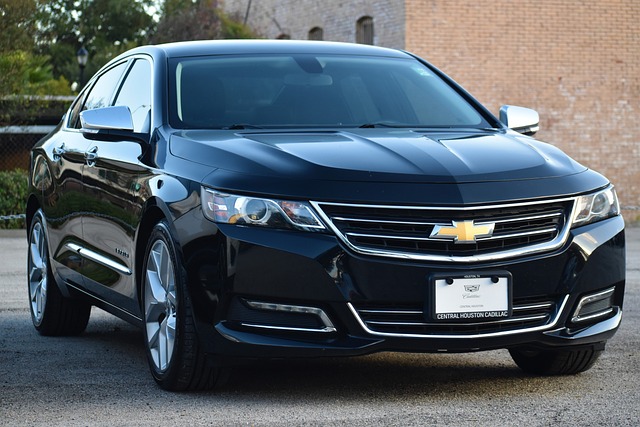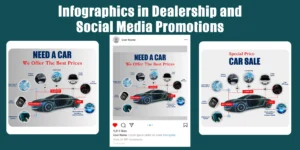Thinking of pursuing an Automotive Dealership Photographer? Read this post first to learn what the job entails, how to land clients, essential gear to invest in, and techniques for flawless vehicle photos.
An automotive dealership photographer not only has a keen eye for composition and lighting but also understands the importance of highlighting the unique features of each vehicle. They have the expertise to capture images that evoke emotion and create a desire in potential buyers to see the vehicle in person. From angles that accentuate the sleek lines of a sports car to capturing the spaciousness of an SUV, a dealership photographer can showcase vehicles in a way that resonates with potential buyers.
As a professional in the automotive industry, capturing stunning photographs of your dealership is crucial for attracting customers. With the right expertise and equipment, you can showcase your inventory and create a visually appealing online presence. A skilled automotive dealership photographer will have a deep understanding of lighting, composition, and styling to highlight the unique features of each vehicle. Trusting a professional photographer will save you time and ensure high-quality images that will make your dealership stand out.
Table of Contents
ToggleThe Power of High-Quality Photography for Automotive Dealerships
Photography plays a crucial role in the automotive industry, especially for dealerships looking to attract potential customers. High-quality photographs of vehicles can be the deciding factor for a customer to visit a dealership or make a purchase online. In the digital age, where consumers heavily rely on visual content, automotive dealership photographers have become essential professionals in the industry.
When it comes to automotive dealership photography, quality is key. High-resolution images that showcase the vehicles in their best light can significantly impact a customer’s perception of a dealership’s professionalism, credibility, and overall quality. Professional automotive photographers have the skills and equipment necessary to capture stunning images that highlight the features, design, and condition of the vehicles.
According to CarMedia 2.0, high-quality photography can increase customer engagement and lead to higher conversion rates. 40% of potential car buyers say that vehicle photos are the most influential factor when deciding to visit a dealership. By investing in top-notch photography, dealerships can create a positive first impression and stand out from the competition.
The Role of an Automotive Dealership Photographer
An automotive dealership photographer‘s primary responsibility is to capture appealing images of the vehicles available for sale or lease. They work closely with dealership staff to ensure that the photographs accurately represent the vehicles’ condition and features. These photographers have an eye for detail and possess the technical skills required to take high-quality photographs in various lighting conditions.
Aside from taking photographs, automotive dealership photographers also play a crucial role in enhancing the overall visual presentation of the dealership. They may assist in staging the vehicles, ensuring that they are clean, well-lit, and positioned in an aesthetically pleasing manner. Additionally, they may collaborate with marketing teams to create compelling visual content for websites, social media platforms, and other marketing materials.
By working closely with the dealership’s marketing team, automotive dealership photographers help create a consistent visual identity for the dealership. They ensure that the photographs align with the dealership’s brand and convey a sense of professionalism and quality. These photographers play a vital role in attracting potential customers and enticing them to choose a particular dealership over others.
The Equipment and Skills Needed
A professional automotive dealership photographer needs the right equipment and skills to deliver exceptional results. Here are some essential equipment and skills:
- Camera and Lenses: A high-resolution DSLR camera with interchangeable lenses is crucial for capturing detailed images. Wide-angle lenses are often used to capture the entire vehicle, while macro lenses are used for close-up shots of specific features.
- Lighting Equipment: Automotive dealership photographers utilize a combination of natural light and artificial lighting to enhance the appearance of the vehicles. They may use diffusers, reflectors, and external flash units to achieve optimal lighting conditions.
- Editing Software: Proficiency in photo editing software like Adobe Photoshop or Lightroom is essential for enhancing and retouching images. Photographers should be skilled in color correction, cropping, and other editing techniques to ensure the images look their best.
In addition to the equipment, automotive dealership photographers need to have the following skills:
- Photographic Composition: Understanding composition techniques such as the rule of thirds, leading lines, and framing helps photographers create visually appealing images.
- Attention to Detail: Paying attention to every aspect of the photograph, including background, lighting, and vehicle positioning, is crucial for capturing high-quality images.
- Excellent Communication Skills: Automotive dealership photographers work closely with dealership staff and marketing teams, so effective communication and collaboration skills are essential.
- Adaptability: Photographers should be able to work in various environments and lighting conditions, adjusting their techniques accordingly.
The Impact of Automotive Dealership Photography on Sales
High-quality automotive dealership photography can have a significant impact on sales and customer engagement. Here are some ways in which it can contribute to a dealership’s success:
- Increased Online Visibility: Eye-catching photographs can help dealership websites rank higher in search engine results, attracting more potential customers.
- Improves Customer Perception: High-quality photographs build trust and credibility, making potential customers more likely to visit the dealership or make a purchase.
- Inspires Emotional Connection: Stunning vehicle photographs evoke positive emotions in potential customers, increasing the likelihood of them choosing a specific vehicle or dealership.
- Encourages Online Engagement: Engaging visual content leads to increased social media engagement, shares, and comments, expanding the dealership’s reach online.
The Future of Automotive Dealership Photography
As technology continues to advance, automotive dealership photography is expected to evolve as well. Virtual reality (VR) and augmented reality (AR) are becoming increasingly popular in the automotive industry, allowing potential customers to experience vehicles as if they were physically present. Automotive dealership photographers may need to adapt to these emerging technologies to provide an immersive and interactive visual experience for customers.
Furthermore, as environmental concerns continue to grow, eco-friendly vehicles are becoming more prevalent in the market. Automotive dealership photographers may need to develop the skills and equipment necessary to capture the unique features and benefits of these electric and hybrid vehicles.
In conclusion, high-quality photography is a vital aspect of automotive dealerships. The skills and expertise of automotive dealership photographers can significantly impact a dealership’s success by attracting potential customers, enhancing the visual presentation, and increasing online engagement. Investing in top-notch photography is a wise decision for dealerships looking to differentiate themselves in a competitive market.

Key Takeaways
- An automotive dealership photographer is responsible for capturing high-quality photos of vehicles.
- They use professional equipment and techniques to showcase the vehicles in the best possible light.
- Automotive dealership photographers create visually appealing images that attract potential buyers.
- They work closely with the dealership’s marketing team to ensure the photos align with the brand and target audience.
- Strong attention to detail is crucial in this role to capture the unique features and selling points of each vehicle.
Frequently Asked Questions
As a professional automotive dealership photographer, you may have some questions about the industry and how to excel in your role. Below are five common questions and detailed answers to help you navigate your career in automotive photography.
1. What skills are essential for an automotive dealership photographer?
The essential skills for an automotive dealership photographer include a good eye for composition, an understanding of lighting techniques, proficiency in using professional cameras and equipment, and the ability to edit and retouch photos effectively. Attention to detail, excellent communication skills, and the ability to work collaboratively with dealership staff are also important in this role.
Furthermore, having a solid understanding of automotive design and aesthetics can be beneficial in capturing visually appealing photos that highlight the features of the vehicles. Continuous learning and staying up-to-date with the latest photography trends and techniques will also help you stand out in the competitive automotive industry.
2. What equipment is typically used by automotive dealership photographers?
Automotive photography often uses professional-grade cameras with interchangeable lenses to capture high-quality images. Wide-angle lenses are commonly used to capture the entire vehicle within the frame and emphasize its size and features. Lighting equipment, such as external flashes or strobes, may be necessary to control and enhance the lighting conditions during the photoshoot.
In addition to cameras and lenses, tripods, reflectors, and diffusers are essential accessories that help stabilize the camera, control reflections and shadows, and achieve the desired lighting effects. Investing in good editing software is also important to enhance the photos and make them look their best before delivering the final images to the dealership.
3. How can I effectively capture the unique features of each vehicle in my photographs?
To effectively capture the unique features of each vehicle in your photographs, start by thoroughly studying the vehicle before the shoot. Understand its key selling points, such as its design elements, interior features, and special technology. By doing so, you can plan your shots in a way that emphasizes these features and showcases the vehicle’s strengths.
Experiment with different angles and perspectives to highlight the vehicle’s distinct characteristics. Pay attention to lighting and use it to bring out the textures, lines, and curves of the car. Utilize props and accessories, if appropriate, to enhance the overall composition and create visually appealing images. Finally, during post-processing, make sure to retouch the photos subtly to enhance the vehicle’s appearance without altering its essence.
4. How can I achieve consistency in my automotive dealership photography?
To achieve consistency in your automotive dealership photography, it’s important to establish a standardized workflow and shooting process. Create a checklist or template that includes the necessary shots and angles for each vehicle to ensure you cover all the important aspects. This will help you deliver consistent results across different vehicles, making it easier for the dealership to showcase its inventory.
Pay attention to lighting and ensure it remains consistent throughout your photographs. Use the same lighting setup or configure it based on the specific vehicle and location conditions. Consistency in editing style is also crucial. Apply consistent color grading, retouching techniques, and overall aesthetic to your photos, maintaining a cohesive and professional look.
5. How can I effectively communicate with dealership staff to understand their photography needs?
Effective communication with dealership staff is vital to understanding their photography needs and ensuring your work aligns with their expectations. Start by establishing a good rapport with the dealership personnel, including the sales team and marketing department. Regularly interact with them to develop a clear understanding of their goals, objectives, and preferences when it comes to automotive photography.
Hold meetings or briefings before photoshoots to discuss specific vehicle features, any special requests, and the intended use of the photographs. Listen carefully, ask for clarification when needed, and take notes to ensure you capture the desired shots. Being attentive and responsive to their feedback and suggestions will help build trust and foster a successful working relationship.
In the world of automotive dealerships, a photographer plays a crucial role in showcasing cars and attracting customers. They use their skills to capture the best angles and features of each vehicle, creating visually appealing images that entice potential buyers.
With a professional and simple approach, the photographer focuses on highlighting the car’s unique selling points, such as its sleek design, spacious interior, or advanced technology. They understand the importance of composition, lighting, and attention to detail in creating captivating photographs that make a car stand out from the rest.
Whether it’s for online listings, brochures, or advertisements, the automotive photographer ensures that each image represents the brand’s image and helps sell cars effectively.
By capturing the essence of each vehicle, the photographer helps potential buyers envision themselves behind the wheel, increasing the chances of a successful sale and customer satisfaction.









